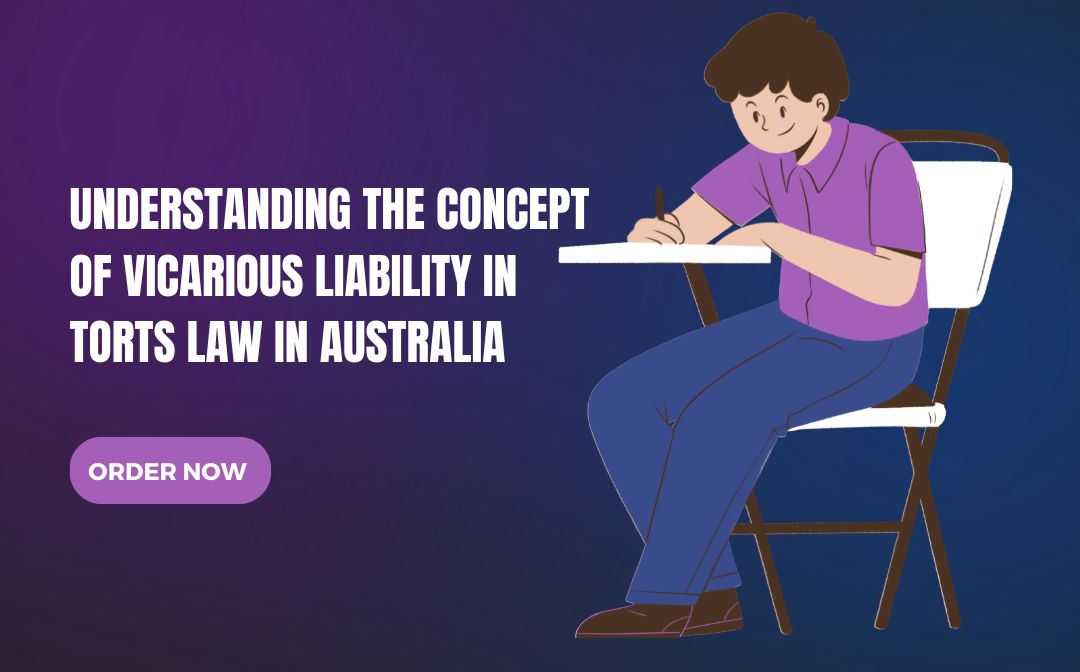UNDERSTANDING THE CONCEPT OF VICARIOUS LIABILITY IN TORTS LAW IN AUSTRALIA
As a general rule, a person is always held liable for the wrongs committed by him. However, there are certain exceptions to this rule when a person will still be held liable for the wrong even though the act might have been committed by someone else and damage is caused to the plaintiff. Such liability is called vicarious liability. It is a form of strict liability because in this case the defendant is strictly held liable for the another’s conduct. This blog is aimed to make you understand the concept of vicarious liability in torts law in Australia.
ESSENTIAL OF VICARIOUS LIABILITY
Generally, vicarious liability occurs in two relationships, first is employer-employee relationship and second is principal-agent relationship. In both of these relationships, there are certain essentials that needs to be fulfilled for vicarious liability to arise. These are:
- There must be relationship of employment or agency between the defendant and the wrongdoer.
- There must be commission of some tortious act.
- The tortious act must have been committed during the course of such relationship/employment.
Now, having understood some of the basic essentials of vicarious liability, it is important to understand in depth the vicarious liability, both in respect of employer-employee relationship and principal-agent relationship.
VICARIOUS LIABILITY IN EMPLOYER-EMPLOYEE RELATIONSHIP
An employer can be made vicariously liable for the tortious acts committed by their employees during the course of employment. An employer-employee relationship is must in order to hold an individual liable for vicarious liability. For example, independent contractor is not covered under the ambit of vicarious liability because the term independent contractor encompasses such relationships which are not ordinarily employer-employee such as sub-contractors etc. Hence, if the tort is committed by the independent contractor, he cannot be held vicariously liable.
Another significant essential is that the act must be committed during the course of employment. The term ‘during the course of employment’ means that an employee must undertake the tortious activity as a part of their employment, irrespective of the fact whether he had been instructed or not to do such act. Some instances of vicarious liability are as follows:
- Employers will not be liable for all the acts arising out of any passion or resentment.
- Employers will not be liable for any act of employee if such act is wholly unconnected with the employment.
- Employer will be liable for any of the duties performed in criminal manner by the employee.
VICARIOUS LIABILITY IN PRINCIPAL-AGENT RELATIONSHIP
The principal-agent relationship is a contractual relationship between the principal and agent, whereby the principal gives the authority to the agent to act or enter into any agreement on his behalf. There is an equitable fiduciary relationship which exists between the principal and agent. The principal-agent relationship is relevant in application of vicarious liability especially in two situations:
- If the owner of the vehicle allows another person to drive such vehicle.
- If the principal holds out the authority to the agent for performing the act on his behalf.
CONCLUSION
Vicarious liability is based on the concept of joint liability where both the employer-employee and principal-agent are held jointly liable. It stems from the idea that the plaintiff’s will be able to recover damages for negligent act or omissions from the employer or principal in a better manner rather than the employees.
If you are seeking in best assignment help, you can turn to trusted assignment writing service in Australia. These services provide you best Tort Law Assignment Help. This assignment writing service in Australia will offer you expert advice, personalized assistance, and timely delivery, which will definitely empower you to excel in your academic career.

